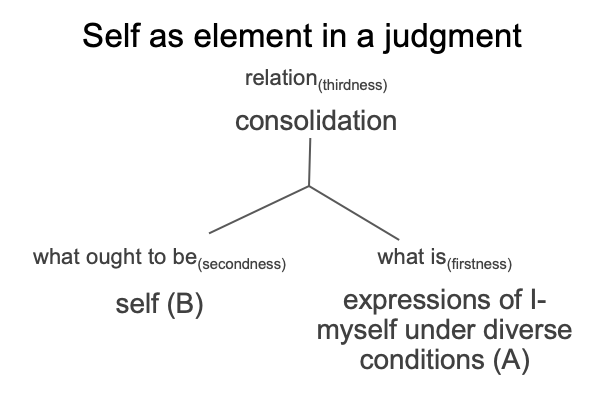0059 Now, I consider the simultaneous evolution of self (B) and cupid (B’).
According to the masterwork, The Human Niche, the Homo lineage adapts into the ultimate niche of triadic relations.
A judgment is a triadic relation.
A judgment brings what ought to be (category) into relation (category) with what is (category).
The categories are firstness, secondness and thirdness. Firstness is the monadic realm of possibility. Secondness is the dyadic realm of actuality. Thirdness is the triadic realm of normal contexts, signs, mediations, judgments and so on. When categories are assigned to each element, then a judgment becomes actionable.
For animals, a judgment leads to immediate action. For hominins, a judgment may lead to immediate action. A judgment may also create an actuality. The element that is assigned to secondness becomes what is for further judgments. This is the case for the evolution of self.
0060 Can I describe the transition from manifestations of I-myself in diverse situations (A) to self (B) as an adaptation into the niche of judgment as a triadic relation?
Yes, the associations are obvious.

0061 This particular judgment is an adaptation into the niche of triadic relations.
This particular judgment is innate and yields self (B) and cupid (B’) as actualities.
Remember, cupid (B’) is defined as the self among other selves.
The noun, self (B), proceeds to the adjective, selfish (C), where the self becomes the actuality that one obsesses over.The noun, cupid (B’), proceeds to the noun, concupiditas (C’), the desire of oneself to be with other selves, where cooperation with others becomes the actuality that one obsesses over.
